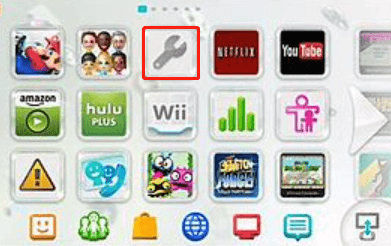When trying to launch a game on Wii U from a disc, many users receive the Wii U error code 150 2031. What does error code 150 2031 mean? How to fix it? Now, let’s explore them together with MiniTool.
What Does Wii U Error Code 150 2031 Mean
According to user reports, the error code 150 2031 only occurs with the Wii U games, but they still can play Wii games well. The error code usually means that either your Wii U disc or disc lens gets damaged or dirty. In addition, the outdated system firmware, improper game mode, and the incompatibility between console and game regions are responsible for Wii U error code 150-203.
How to Fix Wii U Error Code 150 2031
Fix 1. Clean Your Game Disc and Lens on Wii U
If the Wii U error 150-2031 only appears when playing a specific game, then the game disc may get damaged or dirty. In this case, you can clean the disc using a soft cloth and isopropyl alcohol. For that:
Step 1. Remove the game disc from your console.
Step 2. Wet the soft cloth by sprinkling some isopropyl alcohol and clean the disc in straight lines from the center to the outside edge. To avoid unrepairable disc damage, don’t wipe it in circles.
Step 3. Once cleaned, let it air dry up for at least 5 seconds. Then you can insert the game disc back to the console and check if the Wii U invalid disc issue persists.
If the Wii U error code 150-203 occurs with all Wii U game discs, the disc reader len is likely damaged or dirty. In this case, you need to use the Wii U Lens Cleaning kit and follow the manual tutorial included to clean the lens.
Fix 2. Switch to Wii Mode
If you only see the Wii U error 150-2031 when trying to play a classic Wii game, you need to enter Wii mode beforehand. Here’s how to do that:
Step 1. Make sure that you have a Wii Remote at the ready.
Step 2. Move the cursor over to the Wii button (at the bottom left corner) using the Wii Remote and press the A button.
Step 3. Inside the Wii Options menu, you can look for the option that enables you to enable Wii Mode. If the Wii U error codes persist, move on to the potential fixes below.
Fix 3. Remove the Disc and Restart the Console
Another simple method is to remove the game disc and restart your Wii console. Before you do, make sure that there is not downloading or installing updates.
Step 1. Press the Eject button on your console to remove the game disc.
Step 2. Hold down the Power button until your console is turned off. Once the light turns red, remove the Wii U AC adapter.
Step 3. Wait for a few minutes, then plug the AC adapter back into the Wii U and press Power to turn it on.
Step 4. Insert the game disc and see if the Wii U error codes disappear.
Fix 4. Update Your Wii U System
As mentioned above, outdated system firmware is responsible for the Wii U error code 150 2031. For that, you can force a system update to resolve the issue.
Step 1. Open the Wii U menu by using the Remote and click on the System Settings icon and press A.

Step 2. Scroll down the list of Wii options and select System Update, and press A to confirm it.

–image from support.nintendon.com
Step 3. Tap Update to start the update progress. After a while, you should receive a message telling you that your system is up to date, tap OK to close the window. If you aren’t prompted to install a newer version, restart your console and wait for the next startup to complete the update.
Now, you can relaunch the affected game and see if the Wii U error code 150-203 is fixed.
Fix 5. Check Region Locks
It is known that Nintendo games and consoles are region-locked. If they are from different regions, they won’t function properly. So, make sure that your console and the game are from the same region. If you don’t know the region of your console, you can check it by locating the System Settings icon and verifying the system version at the top right corner. The letter at the end indicates your region: E is for EU, U is for the US, and J is for Japanese.
Wii U games have different names for the various region codes. Here we summarize the main region codes as follows:
- North America and South America: NTSC-U
- Europe, New Zealand, Australia, Middle East, India, South Africa: NTSC-E
- China: NTSC-C
- Japan and Asia: NTSC-J
If none of these methods fix the issue, you may have to contact the official Nintendo Support team.

![How to Fix Wii Error 50299, 51030, 51330, 52030 [Ultimate Guide]](https://images.minitool.com/partitionwizard.com/images/uploads/2021/06/wii-error-50299-51030-51330-52030-thumbnail.jpg)
![How to Hack Wii U Homebrew & Play Games on Wii U [Full Guide]](https://images.minitool.com/partitionwizard.com/images/uploads/2021/03/wii-u-homebrew-thumbnail.jpg)
User Comments :